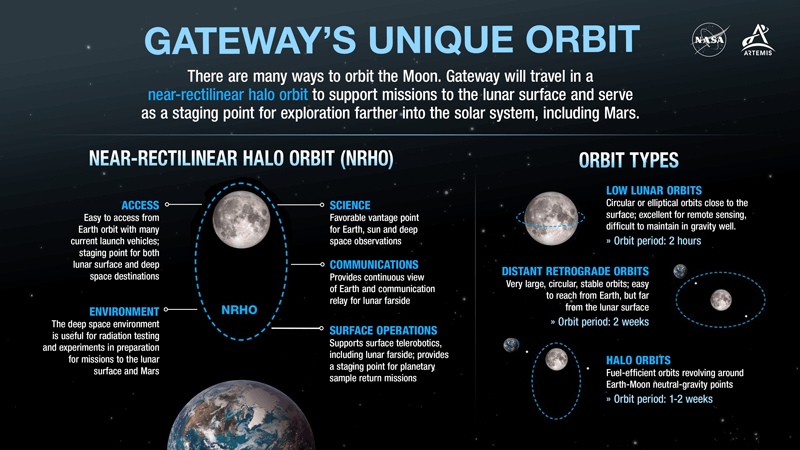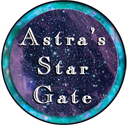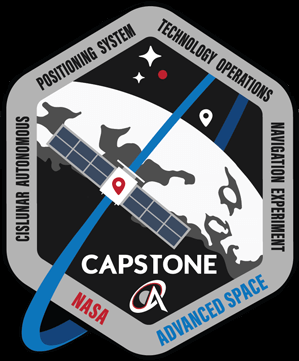Lunar Gateway
Lunar Gateway is a space station that will orbit the Moon and is being planned by international partners, including NASA, European Space Agency (ESA), Canada Space Agency (CSA), and Japan Aerospace Exploration Agency (JAXA). Gateway international partners will provide important contributions to the Gateway space station comprising advanced external robotics, additional habitation, and refueling capability.
According to ESA:
"The Gateway will weigh around 40 tonnes and will consist of a service module, a communications module, a connecting module, an airlock for spacewalks, a place for the astronauts to live and an operations station to command the Gateway’s robotic arm or rovers on the Moon. Astronauts will be able to occupy it for up to 90 days at a time."
On April 1, the first Gateway module arrived in the US. Gateway’s first pressurized module, the HALO (Habitation and Logistics Outpost), traveled from Thales Alenia Space in Turin, Italy, to Northrop Grumman’s integration and test facility in Gilbert, Arizona. It was delivered by cargo aircraft to Phoenix-Mesa Gateway Airport.
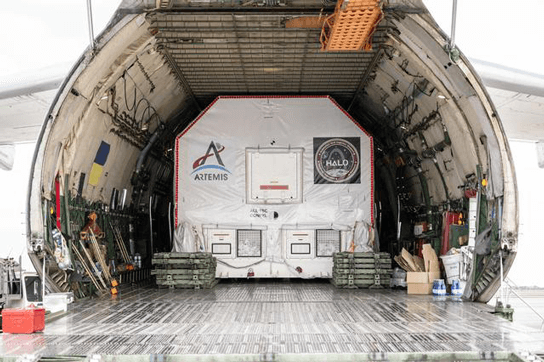
Contribution of Partners
National Aeronautics and Space Administration (NASA)
NASA is developing the first two elements of Gateway that includes the Power and Propulsion Element (PPE) and the Habitation and Logistics Outpost (HALO).
European Space Agency (ESA)
ESA will contribute habitation and refueling modules, enhanced lunar communications to the Gateway and two more Orion Service Modules. ESA will provide the International Habitation module, I-HAB, to enhance Gateway capabilities for scientific research, life support systems and crew living quarters. The European refueling module will also include crew observation windows. The enhanced lunar communications module will be integrated with the Habitation and Logistics Outpost (HALO) module before launch and provide a high-rate communications relay between Gateway and the lunar surface.
Canada Space Agency (CSA)
CSA will and provide an advanced external robotics system including a next-generation robotic arm, Canadarm3, for Gateway. Canadarm3 be able to move along Gateway’s exterior for repairs and other tasks. CSA also will provide robotic interfaces for Gateway modules that will enable payload installation to the first two scientific instruments launching on the inaugural Gateway elements.
Japan Aerospace Exploration Agency (JAXA)
JAXA will provide several capabilities for Gateway’s I-HAB, including Gateway life support capabilities and additional space where crew will live and work during Artemis missions. JAXA will contribute I-HAB’s environmental control and life support system (ECLSS), batteries, thermal control, and imaging components that will be integrated into the I-HAB before launch.
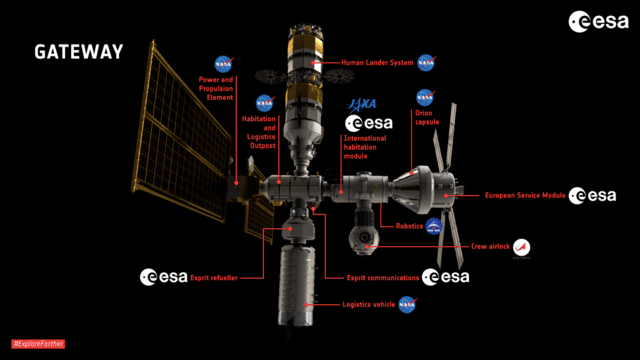

Lunar Gateway NRHO orbit
Gateway is a spacecraft that will be parked in a special lunar orbit usually referred to as a Near Rectilinear Halo Orbit or "NRHO". The NRHO is an important orbit for lunar missions. The orbit uses the L1 center of mass between Earth and the Moon.
NRHO is a highly inclined orbit around the moon and is considered to be in cislunar space. Cislunar space is used to refer to the space between and around Earth and the moon. Cislunar space includes various orbits such as Low Earth Orbit (LEO), Medium Earth Orbit, geosynchronous equatorial orbit (GEO), as well as other orbits, such as Low Lunar Orbit and NRHO, the intended orbit for the Gateway.
NRHO will carry Gateway in a polar orbit around the Moon in a seven-day cycle. In NHRO the spacecraft will travel as close as ~1,000 miles (1,600 km) and as far away as about 42,415 miles (68,260 km) from the lunar surface. This means a lunar lander can depart the Gateway to land on the lunar surface once every 7 days. In this orbit the will need little energy for stationkeeping or to maneuver into other cislunar orbits. Because Gateway will travel farther away around the L1 point, humans on the Gateway will be farther away than the human race has ever traveled.
NRHO provides an unobstructed view of Earth and coverage of the lunar South Pole. Another advantage of the Gateway's NRHO orbit is that the delta-v (energy) required to reach the surface of the moon is significantly smaller than Apollo missions needed. The orbit is considered an ideal staging area for missions to the Moon and beyond.
